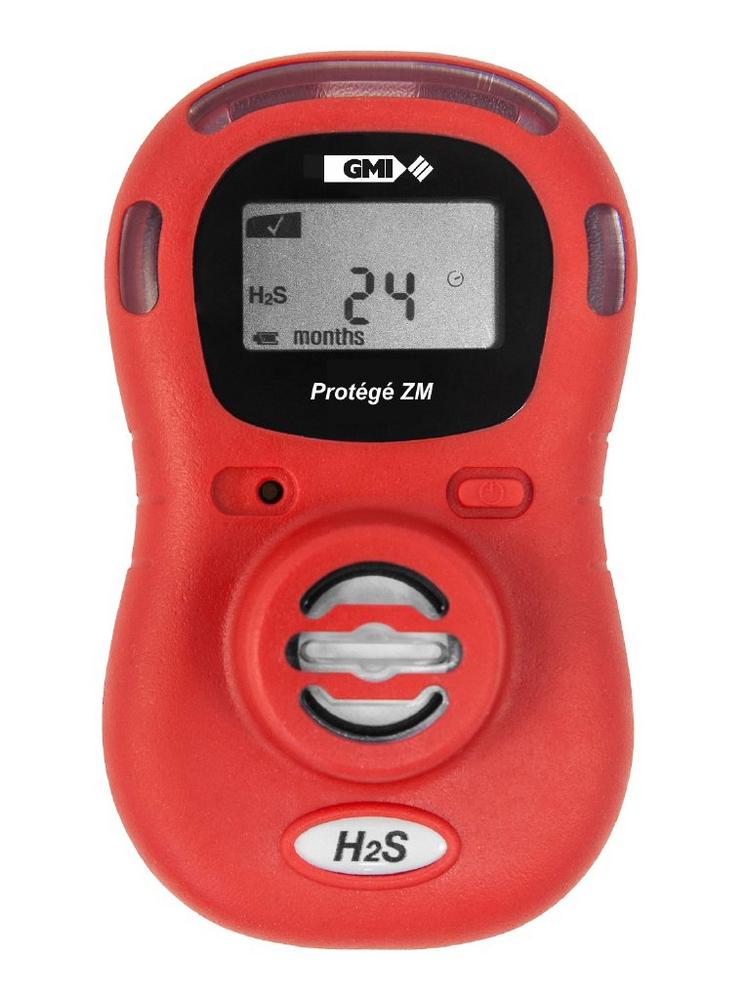
Selecting a Gas Detector for Water Treatment Applications
When choosing a gas detector for use in water treatment applications, engineers should focus on simple, efficient, proven products from a supplier experienced in the provision of end-to-end solutions for this challenging marketplace.
Teledyne Gas & Flame Detection can offer a wide repertoire of detectors based on a number of effective sensor technologies.
As a process, the treatment of wastewater has a number of inherent hazards, namely the generation of flammable and toxic gases such as methane (CH4) and hydrogen sulphide (H2S). Furthermore, oxygen (O2) enrichment and ozone (O3) can present safety risks if the process requires technologies that use these gases, while for pH control some water treatment plants rely on carbon dioxide (CO2), which can be toxic and create an oxygen deficiency hazard.
Toxic chemical gases such as ammonia (NH3) and chlorine (Cl) are common in the preparation of drinking water, which means leak detection is essential to identify any emissions from storage or processing equipment.
Essential protection
Water treatment plants can protect staff and contractors from the dangers of explosion, intoxication and fire by ensuring portable gas detectors form part of their personal protective equipment (PPE). Indeed, for temporary or mobile use in confined spaces, Teledyne offers a wide range of portable gas detectors designed to meet the requirements of the water/wastewater sector.
Of course, many more advantages accrue from combining portable detectors with their fixed counterparts. Fixed gas detectors help deliver the appropriate process automation levels required to reduce running costs and manage risk with minimal operator intervention.
As well as averting health risks, careful product selection can also minimise the gas detector’s total cost of ownership (TCO). H2S, for instance, can corrode metals like steel, copper and brass, which means a gas detection sensor housed in stainless steel is a wise choice.
Technology decisions
Another critical selection decision involves the type of sensor technology, which for gas detection typically centres on electrochemical, semiconductor, infrared (IR) or catalytic.
For water treatment plants that want to monitor O2 deficiency or enrichment, or the presence of low levels of toxic gases such as H2S or Cl, electrochemical sensors are the common choice. A popular pick here is the Teledyne DGi-TT7-E intelligent gas detector. This easy-to-use product features an integral daylight-readable alphanumeric display that indicates local status and alarm level.
The selection of semiconductor sensors, which have a longer operating life under harsh operating conditions than their electrochemical counterparts, usually occurs where very high concentrations of H2S are present, or where ambient temperature or humidity is high. With its high reactivity, strong signal stability and long operating life, the Teledyne CTX 300 fixed detector for O2, CO2 and other toxic gases, is a popular solution. The CTX 300 transmits data in record time, while maintaining the unit is easy thanks to its pre-calibrated sensors and optional LCD display.
IR sensors are preferable for the detection of explosive gases such as CH4 or CO2, or for very corrosive atmospheres containing high levels of H2S. Here, detection is based on the fact that each gas absorbs light on a specific wavelength in the infrared spectrum. Notably, the robust nature of IR sensor cells from Teledyne Gas & Flame Detection means they require only one annual maintenance routine and come with a five-year guarantee. A case in point is the Teledyne GD10 series IR gas detector, which differs from all other models because it utilises silicon-based solid-state IR sources that carry a 15-year warranty. Teledyne Gas & Flame Detection offers the longest combined detector and IR source guarantee on the market. The most common alternative to an IR sensor is a catalytic sensor, which is not as durable but consumes less power. As many water treatment plants are in remote locations and take advantage of solar energy, this factor can prove attractive. Among the Teledyne recommendations here is the DG-TX7 intelligent gas detector, which houses a pair of OXYCOL catalytic sensors.
Teledyne Gas & Flame Detection can also provide sampling kits for the water treatment industry, for applications such as areas highly saturated in H2S.
Take advice
As with all gas detection tasks in the water treatment sector, it is essential to ensure the technology is adapted to the application. Strong concentrations of gas, either immediate or accumulating over time, along with harsh and/or corrosive operating environments, demand proven products. But each application is different, so consulting with a specialist such as Teledyne Gas & Flame Detection is vital in defining the optimum solution for any particular requirements.
For more information, visit www.teledynegasandflamedetection.com or contact gasandflamedetection@teledyne.com
Teledyne Gas and Flame detection provides a portfolio of fixed and portable industrial gas and flame detection solutions used in a variety of industries including petrochemical, power generation, oil & gas, food & beverage, mining and waste & water treatment. The Oldham Simtronics, GMI & Detcon brands bring together over 100 years of industry experience across a wide range of standard products and customized solutions. Always sensing safety, everywhere you look, Teledyne’s global portfolio of products and safety solutions are unquestionably first-in-class. For more information, visit our website: www.TeledyneGFD.com.
Teledyne LeCroy GmbH
Im Breitspiel 11
69123 Heidelberg
Telefon: +49 (6221) 82700
Telefax: +49 (6221) 834655
http://teledynelecroy.com
Global Marketing & Communication Projects Manager
Telefon: +33 (3) 216080-35
E-Mail: nathalie.dewisme@teledyne.com
Global Marketing & Communication Manager
Telefon: +33 (321) 6080-37
E-Mail: Natacha.dequeant@teledyne.com
MEPAX
Telefon: +34 (655) 783-193
E-Mail: e.ahossi@mepax.com
![]()




